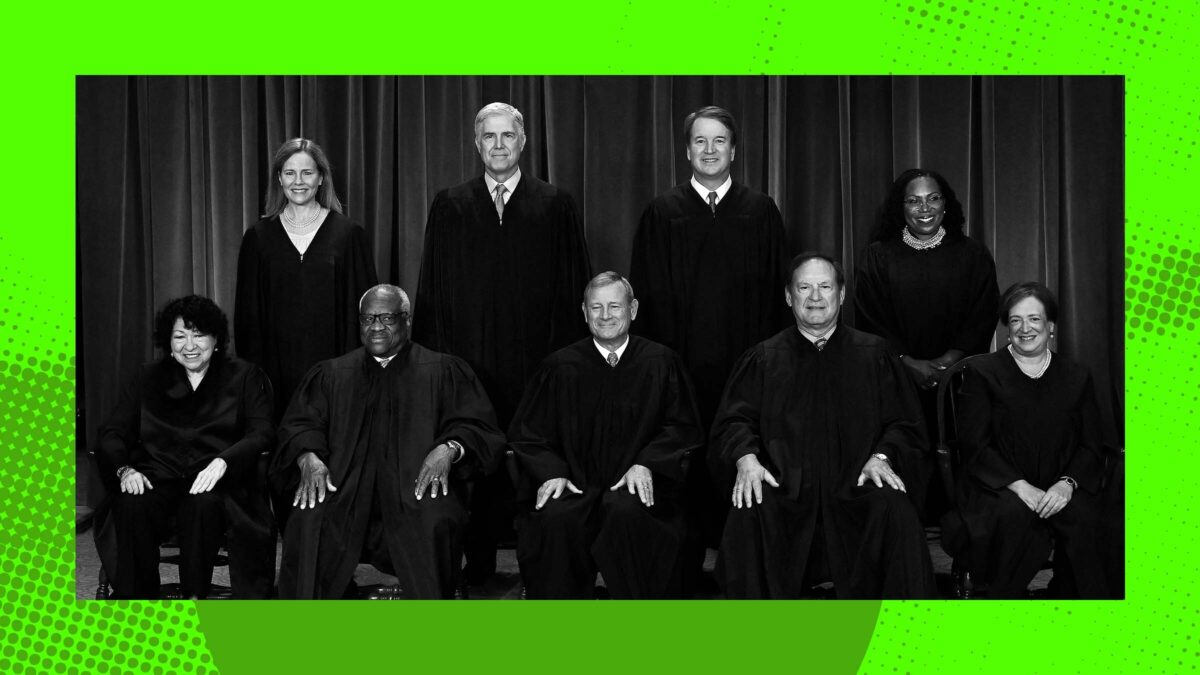On Monday, in response to mounting public criticism and demands that the high court clean up its unethical act, the Supreme Court released a Code of Conduct. Since the Court has long resisted formally adopting ethics rules, such a measure could be mistaken for a meaningful change. But the actual substance of the new “code” seems to guarantee more of the same.
The code begins with a statement from the justices in which they assert that much of the code is “not new” and merely represents “a codification of principles that we have long regarded as governing our conduct”—which, in light of how questionable that conduct has been, isn’t especially reassuring. From there, the document is patterned after the code of conduct applicable to other federal judges, and goes on about what the justices “may,” “should,” and “should not” do. Justices “should,” for example, recuse themselves from a case when their “impartiality might reasonably be questioned,” which, the code says, is whenever “an unbiased and reasonable person who is aware of all relevant circumstances would doubt that the Justice could fairly discharge his or her duties.” This is one of many oddly specific carve-outs, as if you’re not allowed to question Sam Alito’s impartiality unless you read his diary and his therapist’s session notes.
A crucial, unstated distinction between the code that applies to all other judges and the one the justices say applies to them is that neither the code nor its accompanying commentary mentions any kind of discipline or other ramifications for failure to comply. Of course, justices “should” avoid impropriety and “should” be impartial, just like I “should” floss more, but who is going to make either of us do so? A code of conduct without consequences, as Justice Geoffrey Rush once put it, is “more what you’d call guidelines than actual rules.”
Speech of Justice Geoffrey Rush via YouTube
As a tool for imposing meaningful ethical standards on life-tenured justices, the code is a total failure. But the Court’s own statement shows that the document’s purpose is not ethics enforcement: As the justices explained, they published the code to put to rest the “misunderstanding” that they “regard themselves as unrestricted by any ethics rules.” This is, in other words, a PR tactic aimed at getting the public to stop bothering John Roberts. But he’s given them no reason to do so.




